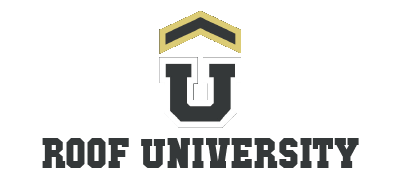The type of wood used in roof slopes plays a crucial role in the durability, strength, and overall performance of the roofing system. From the structural framing to the decking layer, selecting the right wood ensures that the roof can withstand environmental stresses while providing a stable base for roofing materials.
Why the Type of Wood Matters
The choice of wood impacts:
- Strength and Stability: The ability to bear the weight of roofing materials, snow, and wind loads.
- Moisture Resistance: Protection against warping, swelling, and decay.
- Durability: Ensuring the roof lasts for decades with minimal maintenance.
- Cost-Effectiveness: Balancing performance with budget considerations.
Types of Wood for Roof Slopes
1. Plywood
- Description: Engineered wood made from layers of thin wood veneers glued together.
- Applications: Commonly used for roof decking.
- Advantages:
- Strong and durable.
- Resists warping and shrinking.
- Available in various thicknesses (commonly 1/2″ to 3/4″).
- Best For: Residential roofs requiring a smooth, stable surface for underlayment and shingles.
2. Oriented Strand Board (OSB)
- Description: Composed of compressed wood strands and resin, engineered for structural strength.
- Applications: Widely used for roof sheathing.
- Advantages:
- Lightweight and cost-effective.
- Resists splitting and cracking.
- Provides consistent quality and availability.
- Best For: Budget-conscious projects or large-scale construction.
3. Solid Wood Planks
- Description: Natural wood boards, typically made from pine, fir, or cedar.
- Applications: Used in traditional or historic buildings.
- Advantages:
- Aesthetic appeal, especially in exposed applications.
- Naturally durable, especially when treated.
- Offers excellent structural support.
- Best For: Restorations or homes requiring a rustic, authentic look.
4. Tongue-and-Groove Boards
- Description: Interlocking solid wood boards with a tight fit.
- Applications: Used for roof decking and ceilings.
- Advantages:
- Eliminates gaps, reducing the risk of moisture penetration.
- Adds strength and durability.
- Best For: High-end applications or where a visible ceiling finish is desired.
5. Laminated Veneer Lumber (LVL)
- Description: Engineered wood made from multiple layers of thin wood bonded under heat and pressure.
- Applications: Used in load-bearing components like beams and trusses.
- Advantages:
- Extremely strong and dimensionally stable.
- Resists warping, splitting, and shrinking.
- Best For: Structural support in complex roof designs.
6. Cedar
- Description: A naturally durable wood known for its resistance to rot and insects.
- Applications: Often used for exposed beams or decking in rustic-style homes.
- Advantages:
- Resistant to decay and pests.
- Lightweight and easy to work with.
- Best For: Homes in wet or humid climates where rot resistance is critical.
Factors to Consider When Choosing Wood for Roof Slopes
- Roof Pitch:
- Steeper slopes require wood with higher strength and stability to handle the weight of materials.
- Climate:
- In humid or wet areas, choose wood with natural resistance to moisture and decay, such as cedar or treated wood.
- Weight of Roofing Material:
- Heavier materials like clay tiles or slate require sturdier wood, such as LVL or thick plywood.
- Budget:
- OSB is a cost-effective choice, while solid wood and LVL are pricier but offer superior performance.
- Building Codes:
- Ensure the wood type and thickness meet local structural requirements for wind, snow, and seismic loads.
- Fire Resistance:
- Treated wood may be necessary in fire-prone regions to comply with safety standards.
Installation Tips
- Proper Spacing:
- Space rafters or trusses evenly to ensure uniform weight distribution.
- Use Treated Wood Where Needed:
- Apply rot-resistant treatments to wood in high-moisture areas.
- Allow for Expansion and Contraction:
- Leave small gaps between panels to accommodate natural wood movement.
- Seal and Protect:
- Use a waterproof underlayment over wood decking to guard against moisture.
- Ensure Adequate Ventilation:
- Maintain proper attic ventilation to reduce condensation and prolong wood life.
Maintenance Tips for Wood Roof Components
- Inspect Regularly:
- Check for signs of rot, warping, or pest damage, especially after storms or heavy rain.
- Reapply Treatments:
- Periodically reapply sealants or treatments to extend the wood’s lifespan.
- Repair Damage Promptly:
- Replace damaged sections to prevent further structural issues.
- Clean Debris:
- Remove debris like leaves or branches that can trap moisture and cause decay.
Conclusion
Choosing the right wood for roof slopes is essential for creating a durable, long-lasting, and efficient roofing system. Whether you prioritize strength, affordability, or aesthetics, understanding the properties and applications of different wood types ensures your roof will withstand the elements and enhance your home’s value. From engineered products like plywood and OSB to natural wood planks and cedar, selecting the appropriate material guarantees a solid foundation for your roof.
